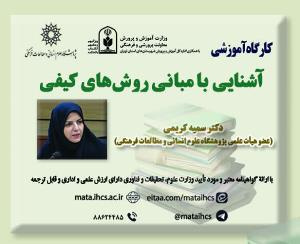واکاوی منازعات اهل حدیث با امامیه در مقوله «جامعه سازی» (مقاله علمی وزارت علوم)
درجه علمی: نشریه علمی (وزارت علوم)
آرشیو
چکیده
متوکل (232-247 ق) دو سال پس احراز مسند خلافت، از اندیشه معتزله رخ برتافت و روی به اهل حدیث نهاد و تمامی امور دینی حکومت را به اهل حدیث واگذار کرد. با این رویداد، ضمن حکومتی شدن اندیشه اهل حدیث و سلطه آنان بر ساختار اندیشه دینی، نوعی از داد و ستد فکری- سیاسی میان خلیفه و اهل حدیث شکل گرفت. در این شرایط، امامیه که با انتقال کانون امامت به سامرا مواجه شده بود، در برابر خود شبکه محدثان نقل گرایی را می دید که ضمن شکل دهی به جامعه ی جدید دینی، اعتقاداتشان، پهلو به معارف شیعه می زد. این مقاله در پی پاسخ به چگونگی این رخداد و بازکاوی آن در مفهوم «جامعه سازی» و به عبارتی ساخت جامعه ای نو، آن هم متناسب با فهم خود از آموزه های دینی است. کوشش تحقیق پیش رو، واکاوی تعامل و نزاع های اهل حدیث و امامیه با روش توصیف و تبیین داده های حدیثی-تاریخی و بر اساس نظریه ی «تعامل سیاسی-فرهنگیِ دین و قدرت در عصر دوم عباسی» می باشد. یافته های پژوهش حکایت از تکاپوی جریان اهل حدیث برای جامعه سازی، با تعابیر جدید از مفاهیمی مانند «سواد اعظم»، «جامعه اسلامی» و «دین حداکثری» دارد که اندیشه اهل حدیث را پشتیبانی و تایید می کرد. امامیه نیز با بهره گیری از پردازش حدیث، تبیین حدیث و شرح شبکه امامت شیعی، به کارزار این رویداد فرهنگی رفت.Analysis of Hadith Controversies with Imams in the Category of "Community Building"
َAl-Mutawakkil (232-247 AH), only two years after gaining the seat of the Caliphate, emerged from the thought of the Mu'tazilites and turned to the Hadith. Then, he left all the religious affairs of the caliphate to the Ahl al-Hadith and expelled the Mu'tazilites. With this event, while the thought of the Ahl al-Hadith became state-owned and their domination over religious thought, a kind of intellectual-political exchange was formed between the Caliph and the Ahl al-Hadith. Under these circumstances, the Imams, who had faced the transfer of the Imamate Center to Samarra, saw in front of them a network of narrators who, while forming a new religious community, believed in Shiite teachings. This study sought to answer how this happened and to re-examine it in the terms: "socialization". The findings indicated that by expanding the intellectual activities of the Hadith movement and trying to nourish society, they designed a set of political, social, cultural and even military strategies in the form of hadith. Imamiyya also used the two elements of hadith and reason to campaign for this cultural event. This research explored the interaction of Hadith and Imamiyya.







